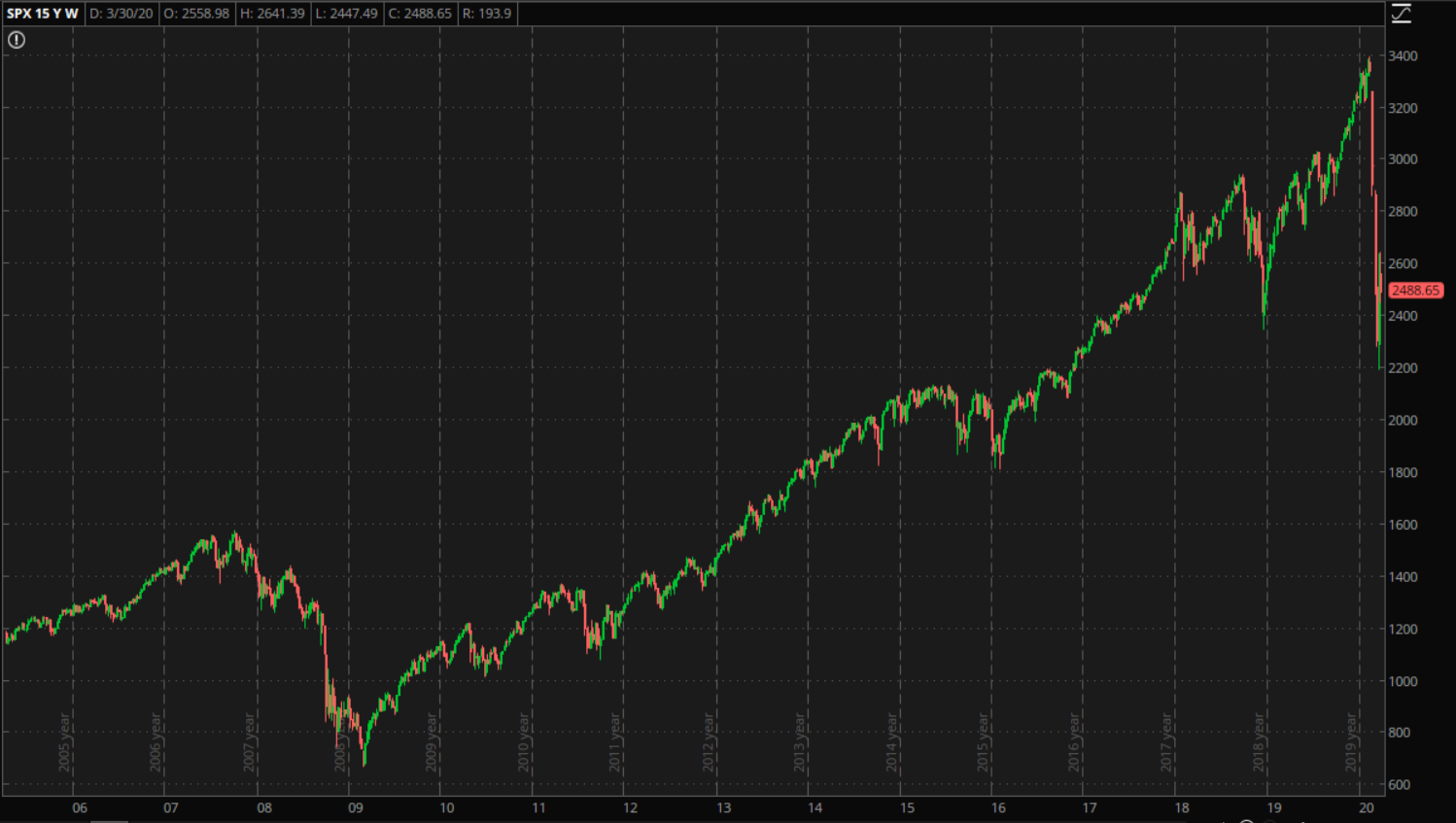Fear Of Missing Out, or FOMO, is a powerful thing in trading. Traders aim to make money in any move, up or down, so FOMO is a major driver of momentum in either direction. It is, however, usually a response to a move already initiated and exaggerates an existing trend. It is rarely the actual cause of a market move, but that seems to be what we are seeing right now in what looks like the biggest FOMO rally ever.
So far, though, that looks like a good thing rather than a cause for concern.
There is a feeling among traders and investors that we are going to see a rapid bounce back from the recent collapse, and the giant intraday swings that we are witnessing in the stock market suggest that there is almost as much panic on the way up as there is on the way down. That is understandable given the experience and psyche of most people.
We remember the events of 2007-2010, or, more accurately, we remember some of them.
My oldest son, for example, is in his mid-twenties. He is a U.S. soldier, currently on deployment in the Middle East. He has been in touch with me more over the last week or two than usual, but that is not entirely out of concern for my well-being during the pandemic. He and his colleagues have all signed up for mobile trading and investing apps and, knowing what I do for a living, are frequently seeking my opinion on the market. Nor is he alone. My middle child, an eighteen-year-old high school senior and a bunch of his friends are also looking to buy on this giant dip.
Many of these young men and women were not investors before, it seems. They were motivated to get involved in the market by the massive, rapid drop we have seen over the last month or two. They have heard stories of people who, at the depths of the recession in 2008, bought Apple (AAPL) at twelve or thirteen bucks, or Amazon (AMZN) below sixty-five, or even stocks like United Health Care (UNH) that were dragged down with everything else despite being in a “safe” sector, and could be had for under twenty bucks at the end of ’08.

Of course, they don’t hear about those that thought that GM or Lehman Brothers, or a few other notable companies, were “too big to fail” before they declared bankruptcy, or the many that got burned betting on the retracement that came at the end of 2008, just before another push down took us to the lows, but that isn’t the point. The fact is, their experience leads them to view a big drop in the market as a time of opportunity, not peril.
And they are probably right.
These are uncertain times and there is very little that is certain, but I will offer up one “sure thing.” At some point, stocks will be not just higher than they are now, but back to the heady heights seen at the start of this year.
The problem is there is no way of knowing when that point will come or how we will get there. Will we see a “V” shaped recovery as we did in the last nine months of 2009, or will it look more like 2002-3, when the S&P 500 was back challenging the lows eight months after the “recovery” began?
I have thought for the last couple of weeks that we will retest the lows again before long. As I pointed out on Friday, the March jobs numbers only cover around half of the month, so the really bad news on that front, as well as other data that shows the extent of the shutdown, is yet to be seen. However, the FOMO factor is not just encouraging those that sold on the way down to get involved, it is also encouraging a flood of new money that has sat on the sidelines for a long time into the market, and that lends a lot of support.
It may be enough to limit any drop back down and mean that the 2191.86 low will hold should we head lower, or it may do even more than that. It could stop us getting there as the pattern of last week, with every move down prompting buying, repeats.
FOMO in this case is not as illogical a reason to trade as fear or any other emotional response usually is. It is a rational motivation based on recent experience, and could be an investor’s friend, even if the data are pretty scary over the next few weeks.
The views and opinions expressed herein are the views and opinions of the author and do not necessarily reflect those of Nasdaq, Inc.

